Getting the lead out for healthy kids
October 29, 2010
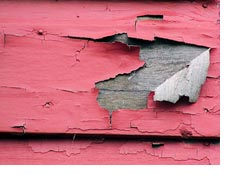 If you haven’t checked your home for sources of lead exposure, this would be a good week to start. The county Department of Public Health, in observance of National Lead Poisoning Prevention Week, is putting out the word about common sources of lead that can cause health problems, especially for children. The main cause of lead poisoning in Los Angeles County children is exposure to peeling lead-based paint, which is commonly found in houses, apartments, and buildings built before 1978. Other sources of lead exposure include contaminated ground soil, lead dust from work clothes, folk remedies like Azarcón and Greta, and imported toys and candy.
If you haven’t checked your home for sources of lead exposure, this would be a good week to start. The county Department of Public Health, in observance of National Lead Poisoning Prevention Week, is putting out the word about common sources of lead that can cause health problems, especially for children. The main cause of lead poisoning in Los Angeles County children is exposure to peeling lead-based paint, which is commonly found in houses, apartments, and buildings built before 1978. Other sources of lead exposure include contaminated ground soil, lead dust from work clothes, folk remedies like Azarcón and Greta, and imported toys and candy.
“In 2009, 671 children in Los Angeles County had seriously elevated blood-lead levels, which is entirely preventable,” said Jonathan E. Fielding, the county’s director of public health. “Lead can seriously affect a child’s brain and nervous system and may cause learning and behavioral problems.” A blood lead test is the only way to identify and confirm elevated lead levels in children.
Parents who are concerned about their children’s exposure to lead are urged to ask their child’s doctor about lead testing. Free materials in many languages, as well as answers to questions on lead poisoning prevention, are available by calling 1-800-LA-4-LEAD or online here. Parents who do not have a doctor for their child can also call the hotline for referrals to free and low-cost health services for children and teens.
Posted 10/29/10
How Westside subway got back on track
October 28, 2010
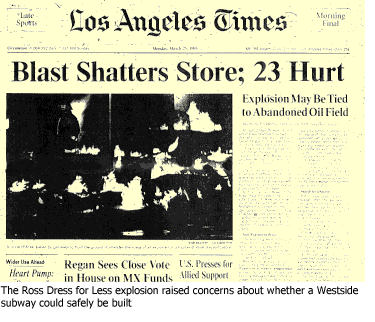 Twenty-five years ago, a methane gas explosion ripped through a Ross Dress for Less store in the Fairfax District, injuring nearly two dozen people and delivering a seemingly fatal blow to plans to build a subway along Wilshire Boulevard to the Westside of Los Angeles.
Twenty-five years ago, a methane gas explosion ripped through a Ross Dress for Less store in the Fairfax District, injuring nearly two dozen people and delivering a seemingly fatal blow to plans to build a subway along Wilshire Boulevard to the Westside of Los Angeles.
The area was designated a “methane gas hazard zone” and Congress moved swiftly to outlaw tunneling through the area.
Today, however, the subway is back. The Metropolitan Transportation Authority board on Thursday approved a locally preferred route for the Westside Subway Extension that would send the project through the once-banned territory. The board’s approval now moves the project into the final environmental review process.
“This is an historic day,” said Supervisor Zev Yaroslavsky, a member of Metro’s Board of Directors. “This is the first time in my lifetime, and in probably all of our lifetimes, that we have gotten this close, this far along the road to extending and building a public mass transportation line through the Wilshire Corridor.
“For all of the vicissitudes that we’ve had over the past quarter century,” Yaroslavsky said, “we finally are at the point where this is becoming more of a reality than a dream.”
The subway’s resurgence—one of the more remarkable comebacks in American transit history—came about in part because of more than two decades’ worth of technological advances, along with the findings of an expert peer review panel which led Congress to lift its prohibition at the urging of Rep. Henry A. Waxman.
“People had all but left it for dead,” said Raffi Hamparian, Metro’s government relations manager. He pointed to the evolution of new tunneling technology and the vote of confidence by the American Public Transportation Association’s peer review panel as two of the key turning points in the subway saga.
In a November 2005 report, the panel of nationally-acclaimed experts said it had unanimously determined that building the Westside subway, with proper procedures and technologies, poses a risk “no greater than other subway systems in the United States.”
As improbable as it might have seemed at the time, that March 24, 1985 blast, which sent flames shooting through fissures in sidewalks with its force, ended up becoming something of a galvanizing event in construction safety.
“We now have the benefit of hindsight. We also have the benefit of new technology,” said Dennis Mori, Metro’s executive officer of construction project management. He said lessons learned during the construction of Metro’s Red Line subway and Gold Line Eastside Extension will provide valuable guidance for tunneling through the gassy territory of the Wilshire corridor.
One of the biggest game-changers—literally—may be the “Closed Face Earth Pressure Balance” tunnel boring machine.
“The machine, fully assembled, is about the length of a football field,” Mori said. First used in L.A. during the Gold Line extension project that started in 2004, the machines offer operators greater control over how fast ground is displaced as they dig, lessening the risk of settlement and sinkholes.
The machines also can be outfitted with what Mori describes as “very robust ventilation equipment” to help workers avoid gas exposure while tunneling through the sometimes-challenging terrain that the Westside subway would need to traverse.
Dr. Geoffrey Martin, a USC professor emeritus and member of Metro’s tunnel advisory committee, said that advances in “slurry shield” tunneling technology also have made it safer for workers to remove gassy soil.
On Thursday, the board adopted a preferred route that would extend the Purple Line subway along Wilshire from Western Avenue to the V.A. Hospital. The route’s cost, about $4.2 billion in 2009 dollars, could rise to more than $5 billion by the project’s completion. All of the potential routes considered as part of the subway’s draft environmental impact process would have needed to pass through “an area characterized by oil and gas fields,” according to the project’s draft environmental report. “Therefore, hazardous subsurface gasses pose a significant hazard for all of the Build Alternatives.”
The draft environmental report listed a number of abandoned or idle oil wells in the area, also noting the La Brea Tar Pits’ “extensive tar sands” and high methane and hydrogen sulfide gas levels.
The Metro board also feels it can move forward with confidence because of years of successful underground projects since the Ross Dress for Less explosion.
Those include work by the city of Los Angeles’ Bureau of Engineering, which successfully tunneled through “almost 30 miles of similar gassy formations.” The bureau was commended by Cal-OSHA for successfully completing “the most dangerous tunnel job in the history of the state.”
More recently, LACMA’s new two-level subterranean garage, which opened in 2008, generated voluminous studies that have been provided to Metro to assist in the subway planning process. Under the proposed route, the Westside subway’s Fairfax station would be located next to the museum.
LACMA President and Chief Operating Officer Melody Kanschat said the museum, given its location beside the Tar Pits, approached the $33 million garage project cautiously, with substantial geological advance work, including boring into the ground to test for gas levels across eight acres at the site. And, with paleontological specimens in abundance—including a spectacular mammoth named Zed—great care also needed to be taken to safely preserve the fossils for the neighboring Page Museum.
She said that the Ross Dress for Less blast—once a dramatic catalyst for new building practices and technologies—seemed to be an increasingly distant memory for members of the public who weighed in on the garage project.
“Honestly, the methane is not as much of a concern for the general public as it was then,” Kanschat said. “The public was actually more concerned about the paleontological discoveries.”
That wasn’t the case, however, at Thursday’s Metro meeting.
The possibility of an underground explosion was among the many potential hazards cited by speakers from Beverly Hills, who turned out Thursday to voice their concerns about the possibility of tunneling beneath the city’s high school. While no final decisions have been made, the route under the high school is one of the options to be studied further under the plan adopted by the board.
Lisa Korbatov, vice president of the Beverly Hills Board of Education, read from a letter to Metro Board Chairman Don Knabe from a lawyer representing the school district:
“It is well known that the high school is located on a working oil field approved many years ago, with oil wells located onsite. The process of tunneling through the hazardous area underneath the high school imposes unacceptable explosion and cancer risks to the high school’s population”—risks, the letter said, that will never go away.
The Beverly Hills residents’ opposition centers on the placement of the subway’s Century City station. They oppose building a station on Constellation Boulevard because it would require tunneling under Beverly Hills High School. They favor an alternative that would run under Santa Monica Boulevard, which sits atop an earthquake fault. However, other speakers, from Westwood’s Comstock Hills neighborhood, spoke out in favor of the Constellation option.
Both options will be explored as part of the project’s final environmental review and preliminary engineering and design process. And, under a motion by Yaroslavsky that was adopted by the board in its vote Thursday, Metro staff was directed to fully explore all possible ramifications of the tunneling in Beverly Hills as well as from Century City to Westwood.
“Obviously, safety is the No. 1 issue for us,” Yaroslavsky said. “We will not build a tunnel that we believe is unsafe, whether it’s under the high school, or whether it’s under Santa Monica Boulevard or whether it’s under the residences in Westwood, or anywhere else in the County of Los Angeles.”
Another speaker, attorney Kenneth A. Goldman, called into question the safety of the machines Metro would use to build the subway, saying they had been linked to accidents in other countries, including Germany, Brazil, China and Korea.
But Metro board members and staff emphasized the safety records of recent local projects, including the Red Line to North Hollywood and the Gold Line Eastside Extension.
“In fact, on the Eastside Gold Line there wasn’t one single safety infraction for that entire period,” said Los Angeles Mayor Antonio Villaraigosa, a Metro board member whose 30/10 initiative is seeking to accelerate building of the Westside subway along with other projects in the region.
Still, as Thursday’s board meeting made clear, the 1985 explosion’s after-effects are not being forgotten.
“We need to know what we have at every step of the way,” Yaroslavsky said, “where there’s an oil shaft, where there’s a methane pocket…and mitigate it and ensure that when we build it, our construction workers are safe. The people who live around the construction are safe. And when we finish it, the people who ride it are safe.”
Posted 10/28/10
Naomi and the homeboys
October 28, 2010
His homies call him “Cranky,” and he’s the first to admit he doesn’t have much of a sense of humor. Nothing funny, he says, about his first 16 years of life, not with what he’s seen and done.
So when the do-gooder Israeli lady showed up at Camp Gonzales in the Santa Monica Mountains to talk to the incarcerated teenagers about how to have healthy relationships with women—specifically, girlfriends and wives—“I thought it was real corny, like it wasn’t for me.”
Yet here he is, standing before a small audience in the probation camp’s gymnasium this week, reading a love letter he’s written to his girl on the outside.
“I hope by the time you receive my letter, the sky is cleared up beautiful, and full of life, just like that special someone you are.”
One by one, eight more wards of the system quietly step forward, young men whose crimes—many of them violent—seems wildly out of whack with their boyish missives:
“No one can compare to the beauty I see in your eyes.”
“I need you in my life, I’m sorry for the damage that I caused you.”
“I love you and wanna be with you, but if you feel another man can treat you better than I can, let me know.
And so it goes, each letter followed by applause, each teenager exploring a tender side that few of them have seen in their own families, a side they believe can get them hurt in neighborhoods ruled by gang machismo. For now, though, they feel safe; none have mailed their letters—yet. As one author jokes, if his note hit his sweetheart’s mailbox, she’d say, “That’s not my boyfriend writing.”
And besides, mailing the letters isn’t really the point of Relationships 101, a pilot program created by American-born Israeli Naomi Ackerman and brought for the first time to one of the county’s Probation Department camps, where minors are sentenced for commitments of up to 9 months. It was funded with $3,500 from Supervisor Zev Yaroslavsky’s office.
Ackerman says that the letters—combined with role playing, word association and improvisation—are a starting point for participants in probation camps or in high schools to understand the power of words to create sick or healthy relationships.
“Change has to start somewhere,” Ackerman says after the program’s culmination on Monday. “If you start by writing, then maybe you can say the words aloud and then, finally, begin to act more gently and compassionately…In the many squares of sorrow and horror in their lives, if one square can have peace and sanity and goodness, then I’m happy.”
***
In a sense, Ackerman’s relationship with the young men is proof of her premise. Although she’s had only about a half-dozen sessions with them since summer, you can see they like and respect her. An actress and playwright, she communicates directly and openly. Most important, when they speak, she listens. Ackerman knows that the challenges she faces here are far greater than those she’s confronted at private academies or public schools such as Fairfax High.
How many of you, she asks, have seen a relationship that’s lasted more than five years? Out of 10 participants, only two answer yes. Their grandparents, they say.
“When I listen to their reality on the street,” she says. “I don’t know how I can change that. I’m telling them to speak nicely to their girlfriends and then they go into their neighborhood and someone is going to shoot them in the face.”
Still, she got her captive audience to dial down their attitudes during four one-hour workshops, the first of which began with an excerpt from her powerful one-woman play, “Flowers Aren’t Enough.” It’s the story of a bright woman from an upper-middle class family whose husband gradually and brutally isolates her, before she finally reclaims her life. Ackerman has performed her play more than 1,000 times throughout the world.
But the real buy-in for the group, Ackerman says, came when she played the Annie Lennox song, Thin Line Between Love and Hate, in which a woman has been treated so badly for so long that she finally takes violent revenge on her man.
This, they get—a real-world consequence to the mistreatment that Ackerman’s been talking about. It touched a nerve for them all. “It made us calm down,’ says one participant, making them realize that, despite varying crimes and allegiances, “we had something in common.”
***
It’s nearly showtime at Camp Gonzales, a place that houses 90 minors between the ages of 16 and 18. Children’s advocates have praised the facility for its forward-thinking programs and emphasis on counseling and staff interaction. Which is not to say the place is soft.
Just days before the performance, Ackerman says, three of her participants are yanked and placed in lock-up for fighting. “Don’t take this away from them, too,” Ackerman says she begged, successfully.
Before the guests start arriving (they’ll include Yaroslavsky and the Probation Department’s new No. 2 man, Cal Remington), Ackerman lays down some of her own expectations for the nine fidgeting and distracted participants as they sit in a row of plastic chairs.
“I know it’s not in your nature, but it will not kill you if you smile,” she says, sounding like the Israeli military sergeant she once was. “You look like you’re going to a funeral. What these people think about you is that you only know how to be tough.”
She also gives it to them straight that their behavior could impact her hopes of getting more funding to expand Relationships 101 to other Probation Camps.
“Today is about money,” she says. “I’m not going to lie to you. But it’s also about you, what you’ve done.” So act accordingly, she warns. No grabbing your crotches or other kinds of street-posturing behaviors.
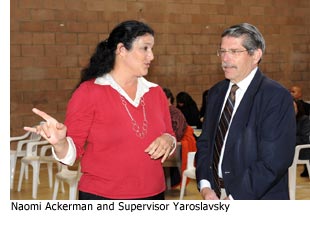 With the audience now seated and hushed, Ackerman tosses a rubber ball to one of the boys, who laterals to another. Each barks out a word that Ackerman says has no business in a relationship. Hate. Unfaithfulness. Unreliable. Dishonest. Cheating. Violence…Then the flipside. Trust, Respect. Commitment. Affection. Faith. Love…
With the audience now seated and hushed, Ackerman tosses a rubber ball to one of the boys, who laterals to another. Each barks out a word that Ackerman says has no business in a relationship. Hate. Unfaithfulness. Unreliable. Dishonest. Cheating. Violence…Then the flipside. Trust, Respect. Commitment. Affection. Faith. Love…
During the next half-hour or so, the teenagers perform role-playing exercises on how to handle situations (some don wigs to act as girlfriends) and, of course, they read their love letters. But the most revealing part comes during the unscripted session at the end, when the young men take questions from audience members whose lives would likely intersect with theirs only in a venue like this.
Surprisingly, they’re anxious to answer, seemingly energized by the reality that their visitors sincerely want to hear their opinions and experiences. Smiles suddenly come easily to them all.
Cal Remington asks how they’ll carry into the outside world the lessons they’ve learned in the program.
“Homies are kind of slow, you know,” one of them explains to the department’s second-in-command. “I’ll have to break it down for them, get it through their thick heads.”
Laughs all around.
A woman then asks what the young men would do if their sisters or mothers were being abused. One voice emerges above the others anxious to answer. He says he’d give him “some advice” to stop. “But I’m not gonna lie. If it’s my blood, I’m not going to let it go. I’d give him some of his own.”
Reality-check all around.
***
With the audience gone, Ackerman gathers her guys in a circle. “Incredible, incredible, incredible,” she says.
The boys don’t want her to leave. “I’m not saying good-bye,” she assures them. She says she’ll return to share with them a video she’s made of the event. Maybe, she says, they can perform at another camp, maybe one for girls. More smiles.
“I just want to say thank you, Naomi,” says one 16-year-old, confessing that “it was hard to do this in front of so many people.”
“A round of applause for Naomi,” says another of the teens.
And with that, their clapping fills the empty gym.
Posted 10/28/10
Voting 101, and other election help
October 28, 2010
 Sure, you know the basics, like the date of next week’s election (Nov. 2) and how you’ll be voting on the candidates and propositions. But just in case you need logistical help before Election Day, the Los Angeles County Registrar-Recorder/County Clerk’s office website has you covered.
Sure, you know the basics, like the date of next week’s election (Nov. 2) and how you’ll be voting on the candidates and propositions. But just in case you need logistical help before Election Day, the Los Angeles County Registrar-Recorder/County Clerk’s office website has you covered.
Need to find your polling place? Click here. Want to make sure you’re registered? Here’s how.
With the election next Tuesday, the Registrar-Recorder/County Clerk’s office will be open this weekend for early in-person voting. Full information is here. There’s even a video to show you how to use the county’s InkaVote Plus system.
So no excuses for not casting that ballot!
Posted 10/28/10
Laker star gives mental health assist
October 27, 2010
Ron Artest of the Los Angeles Lakers couldn’t be prouder of his new fan base: the nation’s mental health practitioners. And in this town, he can now count Dr. Marvin Southard as among his biggest cheerleaders.
Southard, director of Los Angeles County’s Department of Mental Health, told the Board of Supervisors in a letter on Wednesday that Artest has agreed to make a public service announcement for the department, “designed to address stigma and discrimination towards individuals with mental illness.”
As you might remember, just moments after his spectacular performance in the deciding game of the NBA championship last year, Artest profusely thanked his “psychiatrist” on national TV for helping him quiet his emotions so he could rise to the occasion (see video below.)
Given his quirky personality and well-documented anger problems of the past, Artest’s praise of his psychiatrist (actually a sports psychologist in Houston) prompted plenty of jokes. But for him, it was no laughing matter. Years of therapy, he said, had helped him right his course.
“I’m older now, so I think it’s about that time that I stop complaining about what people think about me, because it’s more important than me, you know?” Artest told NBA writer Scott Howard-Cooper last month. “That whole thing (after the championship), I was thinking about it, in my brain I’m like, ‘Am I really about to say this? On national TV?’ But then the other part of me was like, ‘It’s bigger than you. It’s bigger than you. It’s more about people that really need to hear this.’ ”
The PSA, which will be filmed at the Lakers’ practice facility, is scheduled to be produced by Gary Foster. Among his credits, Foster produced “The Soloist,” the film adaptation of Los Angeles Times’ columnist Steve Lopez’ book about his relationship with homeless musician Nathaniel Ayres.
Artest, known as a fiercely tenacious defender, was praised Wednesday by Southard for his off-court fortitude.
“Ron’s contribution is really important,” Southard said in an interview. “One of the main things that cause a burden for people with mental health issues is the social exclusion that they experience.” He said Artest is taking “a really big step of inclusion into the mainstream of our society.”
Artest also has said that he plans to auction the diamond-encrusted championship ring he received during an emotional ceremony before the Lakers’ home-opener on Tuesday. He said he wants the proceeds used to place more therapists in schools.
“You work so hard to get a ring, and now you have a chance to help more people than just yourself, instead of just satisfying yourself,” he told Howard-Cooper. “What’s better than that? For me, this is very important.”

Posted 10/27/10
“Skeletons” digging out of the hole
October 26, 2010
It has always been, shall we say, a bare-bones operation, but the Los Angeles County Coroner’s famous “Skeletons in the Closet” gift shop is being haunted by budget gremlins this Halloween.
The little novelty store—known for its toe-tag key chains and chalk-mark-outline beach towels—has developed a cult-like following since 1993, when it opened. But scaring up a profit has been another matter. Although coroner’s officials say the store’s finances are improving, a forthcoming county audit is expected to report that the enterprise is still in the hole after 17 years.
The difficulty appears to be fairly basic, says L.A. County Auditor-Controller Wendy Watanabe, whose staff has conducted several reviews of the store dating back nearly a decade. She says the store’s sales simply haven’t covered its costs for a variety of reasons, ranging from the general demand for souvenirs to marketing and inventory issues. “It’s a nice concept,” Watanabe says, “but sometimes those little details can kill you.”
 The numbers involved, of course, are miniscule considering the county’s $23 billion budget. The store’s revenues and costs haven’t surpassed roughly $175,000 annually for the past several years. But the shop has provided a unique form of public relations for the coroner’s office, putting a whimsical and irreverent twist on a public service that is otherwise associated with the macabre and morbid.
The numbers involved, of course, are miniscule considering the county’s $23 billion budget. The store’s revenues and costs haven’t surpassed roughly $175,000 annually for the past several years. But the shop has provided a unique form of public relations for the coroner’s office, putting a whimsical and irreverent twist on a public service that is otherwise associated with the macabre and morbid.
Founded after a secretary at the coroner’s office made a gag gift for one of the doctors, the store has grown from its original home in a supply closet to a spacious storefront in the historic lobby of the coroner’s office. Mail orders come from all over the world for offbeat souvenirs that include skeleton craft sets, coasters, official coroner’s T-shirts and signature boxer shorts, known as “undertakers.” In recent years, the store even has been featured occasionally on cable TV and novelty bus tours.
But its location—in a complex of county and industrial buildings east of Downtown—is a long way from Los Angeles’ more conventional tourist spots, and the store’s foot traffic is limited mostly to bereaved next-of-kin and others with coroner business.
The current financial audit, due in a couple of weeks, is a routine follow-up to a 2002 review that took a broader look at the coroner’s office. Among such factors as wavering consumer demand and inventory issues, auditors discovered another hit to the store’s bottom line: merchandise was being given away as gifts to guest speakers and departing county employees.
Money generated by the store is earmarked for the county’s Youthful Drunk Driving Visitation Program, the scared-straight morgue tour for teenaged drivers. But with so few dollars coming in, auditors this year found that the drunk-driving program was subsidizing the gift shop, rather than the other way around.
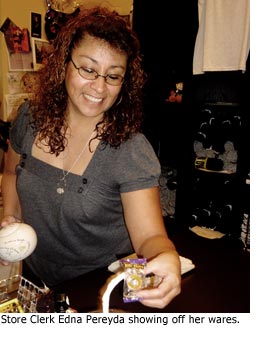 Anthony T. Hernandez, director of the coroner’s department, says that, by his calculations, Skeletons in the Closet made slightly more than it spent during the last two fiscal years because of better inventory controls and a tighter budget. The losses reported by the auditors, he and Watanabe say, represent cumulative totals since the store opened, not a year-by-year tally.
Anthony T. Hernandez, director of the coroner’s department, says that, by his calculations, Skeletons in the Closet made slightly more than it spent during the last two fiscal years because of better inventory controls and a tighter budget. The losses reported by the auditors, he and Watanabe say, represent cumulative totals since the store opened, not a year-by-year tally.
“It goes up and down,” says Hernandez. “Some years everybody’s rushing to us, and others—well, not so much.” Among other things, he said, the store is planning to improve its online marketing and is hoping to set up a Facebook page or other social networking site in the near future.
For store clerk Edna Pereyda, the facts and figures in all those audits, past and present, mean one thing: some long, solitary days behind the counter.
On a recent Friday at lunch, she worked for more than an hour with no company but the autographed 8×10-inch glossies of celebrities who’ve occasionally stopped by while researching movie action roles. A plastic skeleton hand guarded her little dish of Halloween candy.
“People ask if this place is haunted,” she jokes. “But, no.”
Supervisors consider stand on Props. 25 and 26
October 21, 2010
Supervisors Mark Ridley-Thomas and Zev Yaroslavsky are asking their colleagues on the board to support Proposition 25, which would allow the state Legislature to pass the state budget with a simple majority vote, instead of the two-thirds required now.
“The two-thirds vote requirement has intensified partisanship and made it virtually impossible for the Legislature to approve a balanced budget on time without resorting to borrowing, accounting gimmicks, or severe reductions in core services,” the supervisors’ motion says. “State budget delays cut off funds to the County and force costly borrowing and program curtailments.”
The supervisors also would like the board to come out against Proposition 26, which would make certain state and local fees subject to a two-thirds vote by the Legislature or local voters.
The supervisors’ motion, on the agenda for the board’s meeting on Tuesday, Oct. 26, also asks the Chief Executive Officer to work with the Registrar-
Recorder/County Clerk to determine how each measure’s passage or failure would affect the county’s operations and budget.
Posted 10/21/10
Metro directors vote on Westside Subway
October 21, 2010
Metro’s Board of Directors on Thursday, Oct. 28, is expected to adopt a preferred route for the Westside Subway, enabling staff to begin work on the project’s final environmental review process. The board’s vote also will help place the project in line for federal funding in fiscal 2012. Read our earlier coverage on the staff-recommended “locally preferred alternative” here. The meeting is set to begin at 9 a.m. (not the usual 9:30 start time) in the Board Room at Metro headquarters, located at One Gateway Plaza, Los Angeles, behind Union Station.
President’s visit means street closures Friday
October 21, 2010
 President Obama’s visit to Los Angeles on Friday means two things: a) a chance to hear the commander-in-chief address students at a free, public rally on the USC campus, and b) traffic disruptions. There will be a number of closed streets around the Coliseum and the campus, and Metro is warning that bus service will be affected. (Metro’s Twitter alerts are here.) The USC website has details on the student-hosted event where Obama will appear. The president is expected to address the crowd from the steps of Doheny Memorial Library; gates will open at 10 a.m.
President Obama’s visit to Los Angeles on Friday means two things: a) a chance to hear the commander-in-chief address students at a free, public rally on the USC campus, and b) traffic disruptions. There will be a number of closed streets around the Coliseum and the campus, and Metro is warning that bus service will be affected. (Metro’s Twitter alerts are here.) The USC website has details on the student-hosted event where Obama will appear. The president is expected to address the crowd from the steps of Doheny Memorial Library; gates will open at 10 a.m.
A presidential visit in August caused widespread traffic aggravation on the Westside.
Posted 10/21/10




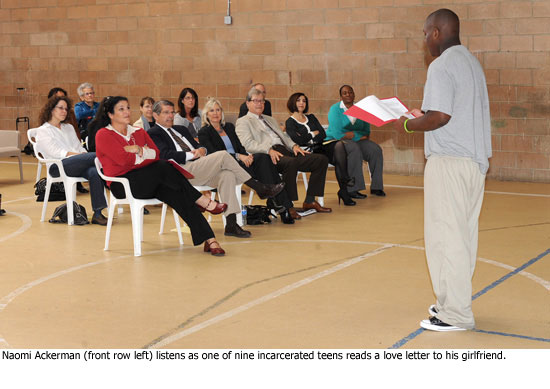
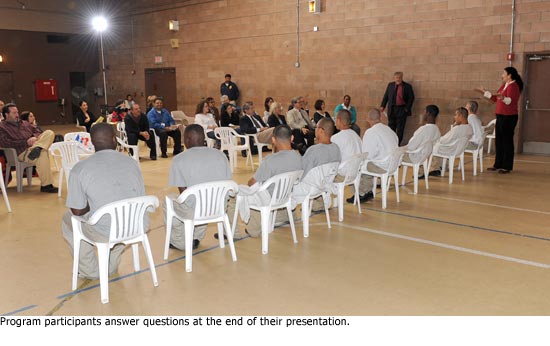
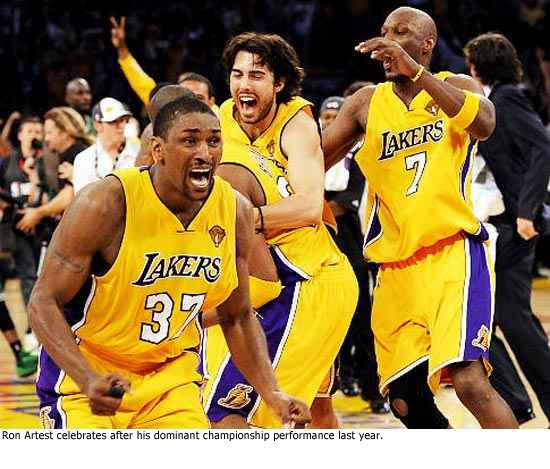
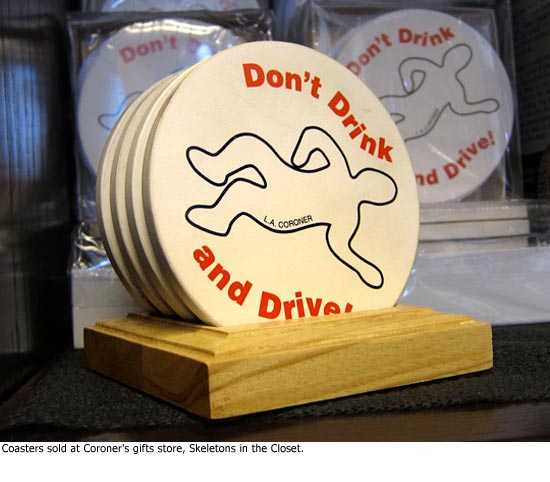





 Check for the latest closure information
Check for the latest closure information








